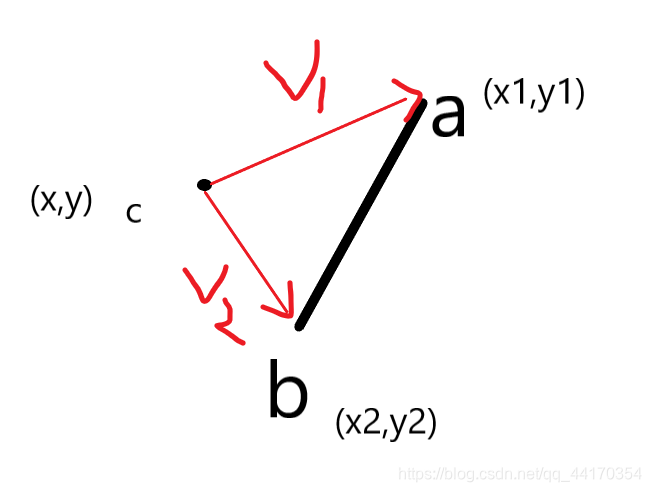原题目:
Calculate the number of toys that land in each bin of a partitioned toy box.
Mom and dad have a problem - their child John never puts his toys away when he is finished playing with them. They gave John a rectangular box to put his toys in, but John is rebellious and obeys his parents by simply throwing his toys into the box. All the toys get mixed up, and it is impossible for John to find his favorite toys.
John's parents came up with the following idea. They put cardboard partitions into the box. Even if John keeps throwing his toys into the box, at least toys that get thrown into different bins stay separated. The following diagram shows a top view of an example toy box.
For this problem, you are asked to determine how many toys fall into each partition as John throws them into the toy box.
Input
The input file contains one or more problems. The first line of a problem consists of six integers, n m x1 y1 x2 y2. The number of cardboard partitions is n (0 < n <= 5000) and the number of toys is m (0 < m <= 5000). The coordinates of the upper-left corner and the lower-right corner of the box are (x1,y1) and (x2,y2), respectively. The following n lines contain two integers per line, Ui Li, indicating that the ends of the i-th cardboard partition is at the coordinates (Ui,y1) and (Li,y2). You may assume that the cardboard partitions do not intersect each other and that they are specified in sorted order from left to right. The next m lines contain two integers per line, Xj Yj specifying where the j-th toy has landed in the box. The order of the toy locations is random. You may assume that no toy will land exactly on a cardboard partition or outside the boundary of the box. The input is terminated by a line consisting of a single 0.
Output
The output for each problem will be one line for each separate bin in the toy box. For each bin, print its bin number, followed by a colon and one space, followed by the number of toys thrown into that bin. Bins are numbered from 0 (the leftmost bin) to n (the rightmost bin). Separate the output of different problems by a single blank line.
Sample Input
5 6 0 10 60 0
3 1
4 3
6 8
10 10
15 30
1 5
2 1
2 8
5 5
40 10
7 9
4 10 0 10 100 0
20 20
40 40
60 60
80 80
5 10
15 10
25 10
35 10
45 10
55 10
65 10
75 10
85 10
95 10
0
Sample Output
0: 2
1: 1
2: 1
3: 1
4: 0
5: 1
0: 2
1: 2
2: 2
3: 2
4: 2
Hint
As the example illustrates, toys that fall on the boundary of the box are "in" the box.
中文概要:
给你n个bin(bin把纸盒分成好多部分),m个玩具,并告诉你bin与玩具的位置,问每个部分有几个玩具
#include<iostream>
#include<algorithm>
#include<cstdio>
#include<cstring>
#include<cmath>
using namespace std;
typedef struct
{
int a,b;
}node;
int t[5005];
node e[5005],r[5005];
int n,m,x,y,xx,yy;
bool cmp(node a,node b)
{
if(a.a==a.b)
return a.b<b.b;
else
return a.a<b.a;
}
int check(int i,int j)
{
if((e[j].a-r[i].a)*(yy-r[i].b)-(y-r[i].b)*(e[j].b-r[i].a)>0)
return 1;
return 0;
}
int main()
{
while(cin>>n&&n)
{
cin>>m>>x>>y>>xx>>yy;
memset(e,0,sizeof(e));
memset(r,0,sizeof(r));
memset(t,0,sizeof(t));
for(int i=1;i<=n;i++)
cin>>e[i].a>>e[i].b;
for(int i=1;i<=m;i++)
cin>>r[i].a>>r[i].b;
e[n+1].a=xx,e[n+1].b=xx;
sort(r+1,r+1+m,cmp);
for(int i=1;i<=m;i++)
{
for(int j=1;j<=n+1;j++)
{
if(!check(i,j)){
t[j-1]++;
break;}
}
}
for(int i=0;i<=n;i++)
{
cout<<i<<": "<<t[i]<<endl;
}
cout<<endl;
}
return 0;
}
思路:
将玩具位置按x从小到大排序,x相同则y从小到大。依次判断玩具位置在哪条线的左边,
在哪条线的左边就记录在哪条线的格子内,最后一条线按长方形盒子右侧边界线计算。
判断点在线的左侧或者右侧有向量叉积:

如图 ,判断c点在线段ab的左右,可以将v1 x v2 即(x1-x)*(y2-y)-(y1-y)*(x2-x);
如果小于0 即右手四指从v1方向旋转到v2 大拇指朝下,则点在线的左边,否则在右边。
注:
主要是重点是if((e[j].a-r[i].a)*(yy-r[i].b)-(y-r[i].b)*(e[j].b-r[i].a)>0)
如果大于零则在右边,小于零在左边,与(x1-x)*(y2-y)-(y1-y)*(x2-x)对照一下
有两个bin点的x,y值用的是边界值。其实应该原来输入的值是相等的,应该没区别,说明一下,要不容易看晕








 本文探讨了一个有趣的编程挑战,即如何计算不同分区内的玩具数量。在一个被隔板分隔的玩具箱中,当玩具随意抛入时,通过输入隔板和玩具的位置坐标,算法能够精确地统计每个区域的玩具数量。
本文探讨了一个有趣的编程挑战,即如何计算不同分区内的玩具数量。在一个被隔板分隔的玩具箱中,当玩具随意抛入时,通过输入隔板和玩具的位置坐标,算法能够精确地统计每个区域的玩具数量。

















 2862
2862

 被折叠的 条评论
为什么被折叠?
被折叠的 条评论
为什么被折叠?










